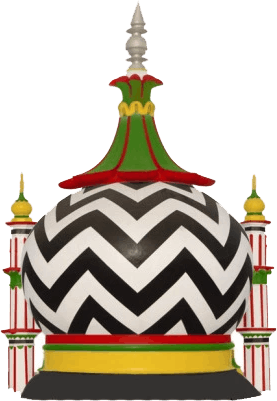Hamid Raza Khan
| Hamid Raza Khan Qadri | |
|---|---|
| Born |
1875 Rabi' al-awwal 1292 Hijri Bareilly, India |
| Died |
1943 Jumada al-awwal 1362 Hijri |
| Region | India |
| School | Sunni, Hanafi |
Main interests | Aqeedah, Fiqh, Tasawwuf |
Hamid Raza Khan Qadri was an Islamic scholar (Hujjat-ul-Islam) and mystic of the Barelvi movement. Qaaderi was born in 1875 (Rabi' al-awwal 1292 Hijri), in the city of Bareilly, India. Hi name at the time of his aqeeqah was Muhammad, as it was family tradition.[1]
Lineage
| Part of a series on |
| Barelvi |
|---|
 |
|
|
Institutions India
Pakistan United Kingdom |
|
Literature and Notable Works |
|
Khan was the son of Ahmad Raza Khan, the son of Naqi Ali Khan, the son of Raza Ali Khan.[2]
Basic education
He received his early education from his father Ahmad Raza Khan. He completed his formal Islamic studies by age 19. He was proficient in Arabic and Persian, as well as ahadith, fiqh, philosophy and mathematics.[3]
Initiation into Silsila and Khilafah
Khan studied with Khatmul Akabir Sheikh Abul Hussain Ahmad Noori of Mahrara, and was initiated into the Barkatiya Silsila. Khan received khilafat from his father, Ahmad Raza Khan.[4]
Literary works
Khan wrote and translated books on various subjects, including his compilation of Risaal-e-Jaleela. He also translated his father's books.
He translated Ad Daulatul Makkiya Bil Mad'datil Ghaibiya from Arabic to Urdu. This book dealt with the knowledge of the unseen of Muhammad.[5]
Khan's works include:[1]
- As Saarimur Rabaani alaa Asraaf Qaadiyani(Refuting Ahmadiyyah Sect)
- Translation of Ad Daulatul Makkiyah
- Translation of Kiflul Faqeeh Alfahim Fi Hukme Qirats addarahim(The issue regarding the Islamic law concerning currency; 'paper money' and all it's permissible uses, zakaat, etc. This work was written in arabic by A'laHadrat as-Shaykh as-Shah Imam Ahmad Raza Khan which answers the questions of Scholars Of arab regarding the permisibility of paper money at that time)
- Haashia Mulla Jalaal
- Naatia Deewaan
- Fatawa Hamidiyah
Death
Khan died on the 17th of Jamadi-ul-Ulaa (23 May 1943) while praying. His funeral prayer was led by Mohammad Abdul Ghafoor Hazarvi. His tomb is beside his father. [1]
